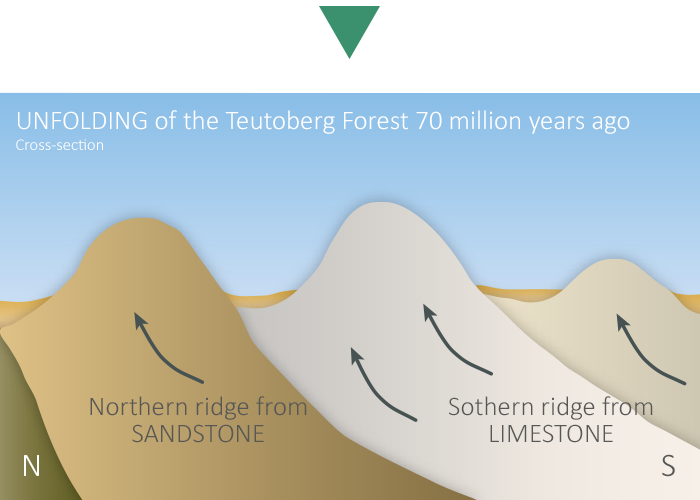The emergence of the Teutoburger Wald
This page is only available for mobile

The sea floor becomes a mountain
The emergence of the Teutoburger Wald
(Teutoburg Forest)
In earlier times, the Teutoburger Wald was called Osning.
In the beginning
In the then largely flat Osnabrück region, marine sediments - clays, sands, lime - had solidified to stone during the Cretaceous Period. Sandstone near the coast, limestone at the bottom of the open sea.

The unfolding
Due to tectonic shifts in the earth's crust 70 million years ago, the elevations of the Teutoburg Forest slowly developed along a fracture edge that dates back to more ancient times. Hard layers of rock broke apart under the high pressure and were thrust up to the surface, some nearly vertically.

The current form
The onset of weathering gradually exposed the harder rocks, the light-colored limestone rock on the southern ridge and the hard Osning sandstone in the north. Wind and rain as well as ice from the ice ages removed softer material and gave the mountain range its current shape. This created bizarre rock formations like the Dörenther cliffs with its legendary "Crouching Woman".


140 million years ago there was a sea here. Thick layers of sand and fine lime mud were deposited in the shallow waters. Over the course of millions of years, these layers solidified and sandstone and limestone developed. When the pressure of the moving African plate lifted up the Alps, these forces also affected our region. During the Osning thrust, rock masses were broken up, lifted, shifted, and tipped over. Cliffs were created.

Perhaps you know this from a visit to the beach... Sand that is moved back and forth by the ebb and flow of the sea, acquires a rippled pattern. This same pattern you can still see in ancient sandstone.
